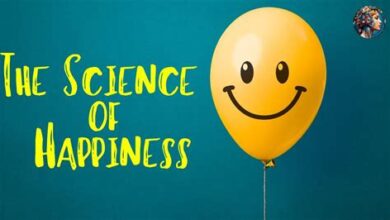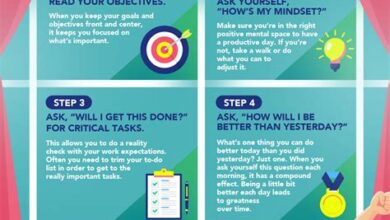Work-Life Balance: Tips for a Healthier Lifestyle

Achieving work-life balance is crucial for a healthier and more fulfilling lifestyle. This blog post explores the importance of integrating professional and personal commitments effectively. Discover strategies for managing time efficiently and reducing stress to reclaim your well-being. Learn how to set clear boundaries to separate work from your personal life, preventing burnout and fostering healthier relationships. With actionable tips, you can start prioritizing work-life balance today, leading to increased productivity, improved mental health, and a more balanced and satisfying existence. Don’t wait, start implementing these strategies now for a better you!
Understanding The Importance Of Work-Life Balance: A Primer
In today’s fast-paced world, achieving a healthy work-life balance is more crucial than ever. It’s about creating a harmonious blend between your professional responsibilities and your personal life, ensuring that neither aspect overshadows the other. Neglecting this balance can lead to burnout, decreased productivity, and a decline in overall well-being. It’s not merely about dividing your time equally, but rather about managing your time and energy effectively to fulfill your commitments both at work and in your personal life.
The consequences of an imbalance can be far-reaching. Overworking consistently can result in chronic stress, anxiety, and even physical health problems. Relationships with family and friends may suffer due to lack of time and attention. Hobbies and personal interests often get sidelined, leading to a sense of unfulfillment. Prioritizing work-life balance is about recognizing that your well-being is intrinsically linked to your professional success.
Key Reasons Why Work-Life Balance Matters:
- Reduced Stress and Burnout
- Improved Mental and Physical Health
- Stronger Relationships
- Increased Productivity and Creativity
- Greater Job Satisfaction
- Enhanced Overall Well-being
To truly understand the importance of work-life balance, consider the long-term benefits it offers. It’s not just about feeling good in the present; it’s about investing in your future health, happiness, and success. It requires conscious effort and consistent adjustments to your daily routines and priorities.
Finding the right balance is a personal journey, and what works for one person may not work for another. The key is to be mindful of your own needs and limitations, and to make choices that support your overall well-being. As the popular saying goes, “You will never feel truly satisfied by work until you are satisfied by life.” This statement perfectly encapsulates the need for a holistic approach to life, where work is just one component of a fulfilling existence.
| Area of Life | Potential Impact of Imbalance | Benefits of Balance |
|---|---|---|
| Health | Increased stress, fatigue, weakened immune system | Improved physical and mental health, better sleep |
| Relationships | Strain on family and friends, feelings of isolation | Stronger bonds, more quality time with loved ones |
| Personal Growth | Neglected hobbies, lack of personal fulfillment | Opportunities for learning, creativity, and relaxation |
| Career | Burnout, decreased productivity, lower job satisfaction | Increased focus, motivation, and career longevity |
Strategies For Managing Time Effectively And Reducing Stress
Achieving work-life balance requires effective time management and stress reduction techniques. Without these skills, the demands of work can easily encroach upon personal time, leading to burnout and a diminished quality of life. Implementing practical strategies can help individuals regain control over their schedules and reduce stress levels.
Prioritizing Tasks Using the Eisenhower Matrix
One highly effective method for prioritizing tasks is the Eisenhower Matrix, also known as the Urgent-Important Matrix. This tool helps you categorize tasks based on their urgency and importance, allowing you to focus on what truly matters. By distinguishing between urgent and important tasks, you can avoid spending time on activities that provide little value.
Using the Eisenhower Matrix can dramatically change how you approach your daily tasks. It helps prevent you from getting bogged down in less important activities, freeing up time and mental energy for what truly matters both at work and in your personal life.
| Urgent | Not Urgent | |
|---|---|---|
| Important | Do First (e.g., Crisis, Deadline) | Schedule (e.g., Planning, Relationship Building) |
| Not Important | Delegate (e.g., Interruptions, Some Meetings) | Eliminate (e.g., Time Wasters, Trivia) |
Prioritization isn’t just about getting more done; it’s about getting the right things done. This focused approach reduces feelings of being overwhelmed and increases overall productivity.
Techniques for Minimizing Distractions
In today’s hyper-connected world, distractions are everywhere. Minimizing these interruptions is crucial for maintaining focus and effectively managing time. Identifying common distractions and implementing strategies to mitigate them can significantly improve productivity and reduce stress.
The ability to maintain focus directly contributes to a more balanced life. Less time spent fighting distractions means more time for personal pursuits, family, and relaxation.
- Steps to Effective Time Management:
- Identify your most time-consuming tasks.
- Prioritize tasks using the Eisenhower Matrix.
- Set specific, achievable goals for each day.
- Eliminate or minimize distractions during work hours.
- Schedule regular breaks to avoid burnout.
- Review and adjust your schedule regularly.
Scheduling Breaks and Downtime
Scheduling breaks and downtime is essential for both productivity and well-being. Regular breaks help prevent burnout, improve focus, and boost creativity. Downtime allows the mind to rest and recharge, leading to better overall mental and physical health.
By consciously incorporating breaks into your daily schedule, you ensure that you are taking care of your well-being while also enhancing your ability to perform at your best. Remember, a well-rested mind is a productive mind.
It’s not enough to be busy, so are the ants. The question is, what are we busy about? – Henry David Thoreau
Remember, work-life balance is not about dividing your time equally between work and personal life, but rather about creating a fulfilling and sustainable lifestyle that accommodates both aspects. These strategies offer practical ways to regain control of your time, reduce stress, and cultivate a healthier, more balanced life.
Setting Boundaries: How To Separate Work From Personal Life
One of the most critical aspects of achieving a healthy work-life balance is setting clear boundaries between your professional and personal life. This involves establishing rules and habits that prevent work from encroaching on your personal time and vice versa. Without these boundaries, it’s easy to fall into the trap of constantly being on, leading to burnout and decreased overall well-being. Setting boundaries allows you to protect your personal time, ensuring you have the opportunity to recharge, pursue hobbies, and connect with loved ones.
Setting boundaries can take many forms, and the specific strategies that work best for you will depend on your individual circumstances and job requirements. It might involve setting specific work hours and sticking to them, even when working from home. It could also mean establishing clear communication guidelines with colleagues and clients, so they know when you are available and when you are not. Remember, it’s okay to say no to additional work requests if you’re already feeling overwhelmed. Prioritizing your well-being is essential for long-term success and happiness.
| Boundary Type | Description | Example |
|---|---|---|
| Time-Based | Allocating specific hours for work and personal activities. | I will not check work emails after 7 PM. |
| Physical Space | Creating a dedicated workspace separate from your living area. | I will only work in my home office, not in the living room. |
| Communication | Setting expectations for response times and availability. | I will respond to emails within 24 hours during workdays. |
| Emotional | Protecting your emotional well-being by detaching from work stressors. | I will not dwell on work issues during my personal time. |
Furthermore, effective communication is key to maintaining healthy boundaries. Clearly communicate your availability and limitations to your colleagues, clients, and even your family. This helps manage expectations and prevents misunderstandings. Don’t be afraid to assert your needs and protect your time. Remember, setting boundaries is not selfish; it’s a necessary component of self-care and contributes to a more sustainable and fulfilling life.
Here are some practical tips for setting and maintaining boundaries:
- Establish clear work hours: Define when you start and end your workday and stick to it as much as possible.
- Create a dedicated workspace: If you work from home, having a designated area helps separate work from personal life.
- Learn to say no: Don’t overcommit yourself to projects or tasks that will encroach on your personal time.
- Communicate your boundaries: Let your colleagues and clients know when you are available and when you are not.
- Take regular breaks: Step away from your work throughout the day to recharge and avoid burnout.
- Disconnect from technology: Turn off work-related notifications during your personal time to avoid distractions.
- Prioritize self-care: Make time for activities that help you relax and de-stress, such as exercise, hobbies, or spending time with loved ones.
Ultimately, setting boundaries is an ongoing process that requires consistency and self-awareness. By actively managing your time and energy, you can create a healthier and more balanced lifestyle, where work and personal life complement each other rather than compete.
Here is the content section for your article:
Actionable Tips For Achieving A Healthier Lifestyle Today
Achieving a healthier lifestyle amidst the demands of modern work requires conscious effort and consistent action. Prioritizing well-being isn’t a luxury; it’s a necessity for sustained productivity and overall happiness. Making small, incremental changes can lead to significant improvements in your physical and mental health, directly impacting your work-life balance.
| Time | Activity | Benefit |
|---|---|---|
| 7:00 AM – 8:00 AM | Morning Exercise (Yoga/Walk) | Boosts energy, improves mood |
| 8:00 AM – 9:00 AM | Healthy Breakfast & Family Time | Provides nutrients, strengthens bonds |
| 9:00 AM – 5:00 PM | Focused Work Blocks (with breaks) | Increases productivity, reduces burnout |
| 6:00 PM – 7:00 PM | Dinner & Relaxation | Aids digestion, reduces stress |
Start by incorporating simple habits into your daily routine. These don’t require massive overhauls but rather subtle shifts in your approach to work and leisure. Consider these immediate actions to reclaim your well-being and foster a more balanced life. Remember, consistency is key, and even small steps can accumulate into substantial positive changes.
- Immediate Actions You Can Take:
- Hydrate Consistently: Keep a water bottle at your desk and sip throughout the day.
- Take Short Breaks: Stand up and stretch or walk around every hour.
- Mindful Eating: Pay attention to your hunger cues and avoid eating at your desk.
- Digital Detox: Dedicate time each evening to disconnect from screens.
- Prioritize Sleep: Aim for 7-8 hours of quality sleep each night.
- Engage in Hobbies: Set aside time for activities you enjoy outside of work.
It’s also beneficial to cultivate a supportive environment. Communicate your needs and boundaries to your colleagues and family. Seeking support from friends, family, or a professional can provide you with valuable insights and strategies for maintaining your work-life balance. Don’t underestimate the power of a strong support system.
Ultimately, achieving a healthier lifestyle is an ongoing journey, not a destination. By integrating these actionable tips, you can pave the way for a more balanced, fulfilling, and productive life. Remember to be patient with yourself, celebrate small victories, and consistently reassess your priorities to ensure you’re on the right track.



